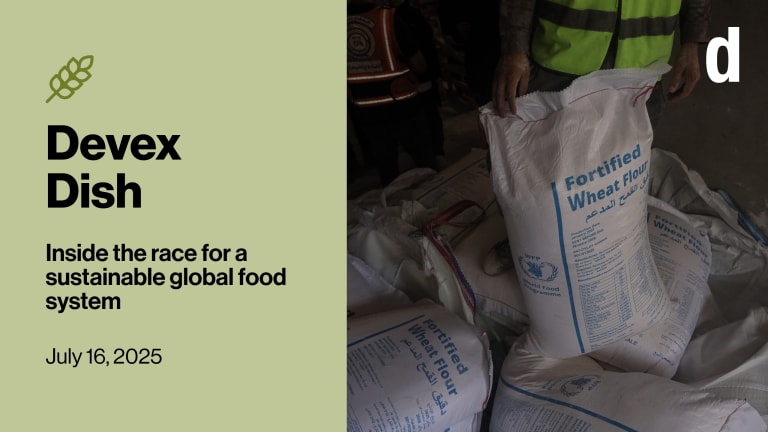
After three years of haggling, the farm bill is finally headed to the Oval Office.
With U.S. President Barack Obama’s signature, the Agriculture Act of 2014 is expected by a broad coalition of government officials, development experts, NGOs and independent analysts to make the nation’s international food aid system more efficient and more flexible.
A nearly $1 trillion authorization of U.S. food and farming programs that has been hung up in negotiations for years, the highly controversial bill features “significant” changes to the way the United States delivers food to countries in need around the world.
One of the champions of these reform measures is U.S. Agency for International Development Administrator Rajiv Shah, who we asked about the expected impacts of the reform for the agency’s international food assistance programs.
“The reforms in the bill significantly limit the inefficient practice of monetization, which requires USAID to ship American food aid to foreign markets where it is sold to fund food security related development activities,” Shah told Devex.
The farm bill increases from 13 to 20 percent the percentage of Food for Peace funding that can spent on non-emergency food aid programs through cash-based resources, instead of through monetized food aid. It also provides $80 million to the U.S. Department of Agriculture to implement local and regional procurement programs for food aid commodities.
While monetization has been part of the U.S. food aid system for decades, critics argue the system was devised at a time when surpluses would otherwise have gone unpurchased. Concerns about the market distortions foreign commodities can have when they are introduced to developing country markets — as well as studies suggesting the sale of U.S. agriculture commodities overseas does not offset the costs of transporting them — have helped establish a bipartisan and international movement for U.S. food aid reform in recent years.
READ:How US food aid reform is advancing
Last spring, the Obama administration decided to support a comprehensive package of reform measures aiming to relocate food aid accounts within USAID’s International Disaster Assistance budget — only to see that effort fall short.
While the omnibus spending bill passed in January included a small gesture — $35 million — to increase flexibility on non-emergency food aid spending, the farm bill goes several steps further in reducing USAID’s dependence on monetization.
“In its place, we will have greater flexibility to directly fund these programs, enabling the United States to reach an estimated 600,000 more people annually with the same amount of resources,” said Shah, who called these changes an “important step forward.”
According to a source familiar with U.S. food security programs, the increase in flexibility afforded by the seven percent increase to cash-based funding will likely eliminate USAID’s reliance on monetization for all but one of its current Food for Peace-funded programs. In order to maintain a requirement that 15 percent of funding flow through monetized food aid, the agency will probably maintain a program in Bangladesh, which — the source pointed out — uses monetization more efficiently than many projects that will now be funded in cash.
While many aid experts and implementers have for years defended a gradual phaseout of monetization, another group of NGOs, agriculture producers, and shipping companies has lobbied to support the current model, claiming that U.S. commodities are of higher quality and should be prepositioned so they can be delivered more efficiently.
The Alliance for Global Food Security however issued a statement in support of the reform measures included in the current farm bill, suggesting this round of food aid reform will likely sail through with little opposition.
Read more on U.S. aid reform online, and subscribe to The Development Newswire to receive top international development headlines from the world’s leading donors, news sources and opinion leaders — emailed to you FREE every business day.
See more:








